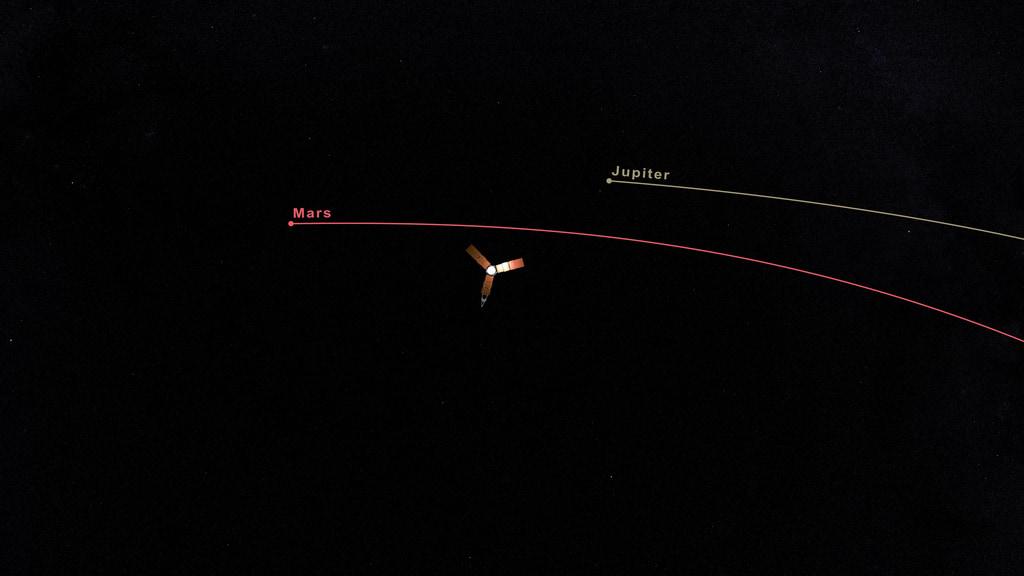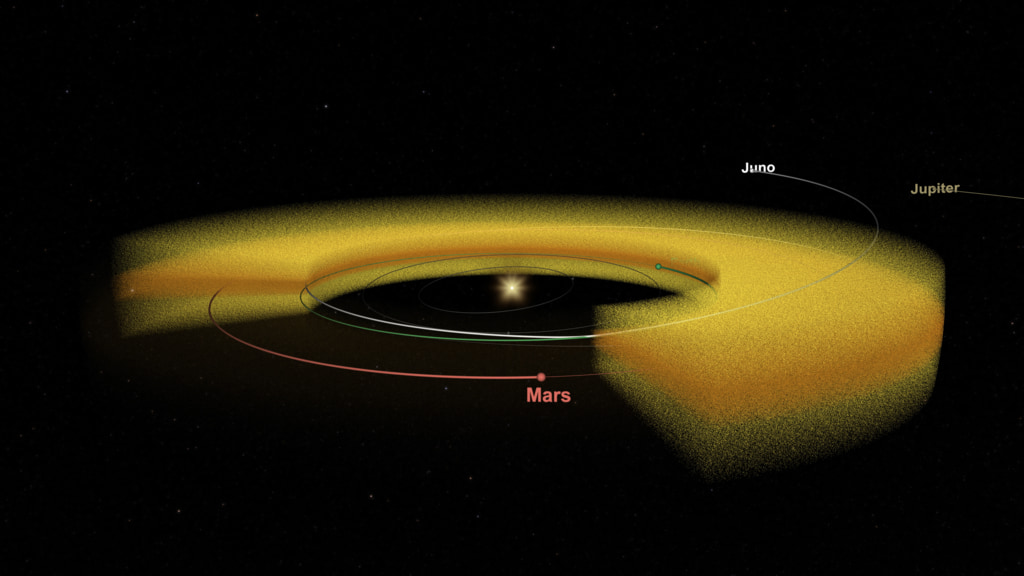Juno Interplanetary Dust: Visualizations
This visualization depicts a region of interplanetary dust that was detected by the Juno spacecraft. The visualization begins with a solar system view of Juno departing Earth and heading to Jupiter. The camera rotates down and a region of dust is revealed between Earth and Mars. Two distinct regions of density are represented using different colors. As the camera pushes into the volume, a portion of the volume is removed to show the interior shape and how it corresponds to the orbit of Mars.
Look up to the night sky just before dawn, or after dusk, and you might see a faint column of light extending up from the horizon. That luminous glow is the zodiacal light, or sunlight reflected toward Earth by a cloud of tiny dust particles orbiting the Sun. Astronomers have long thought that the dust is brought into the inner solar system by a few of the asteroid and comet families that venture in from afar. But now, a team of Juno scientists argues that the planet Mars may be the culprit. An instrument aboard the Juno spacecraft serendipitously detected dust particles slamming into the spacecraft during its journey from Earth to Jupiter. The impacts provided important clues to the origin and orbital evolution of the dust, resolving some mysterious variations of the zodiacal light.
This page provides a data visualization of Juno’s trajectory from Earth to Jupiter, and the interplanetary dust cloud that it traversed along the way. Learn more about this discovery.
For More Information
See NASA.gov
Credits
Please give credit for this item to:
NASA's Scientific Visualization Studio
-
Visualizer
- Kel Elkins (USRA)
-
Producer
- Dan Gallagher (USRA)
-
Scientist
- John Connerney (NASA/GSFC)
Release date
This page was originally published on Tuesday, March 9, 2021.
This page was last updated on Wednesday, November 15, 2023 at 12:16 AM EST.
Missions
This visualization is related to the following missions:Datasets used in this visualization
-
[Juno: Magnetometer]
ID: 1107This dataset can be found at: https://link.springer.com/article/10.1007/s11214-017-0334-z
See all pages that use this dataset
Note: While we identify the data sets used in these visualizations, we do not store any further details, nor the data sets themselves on our site.

